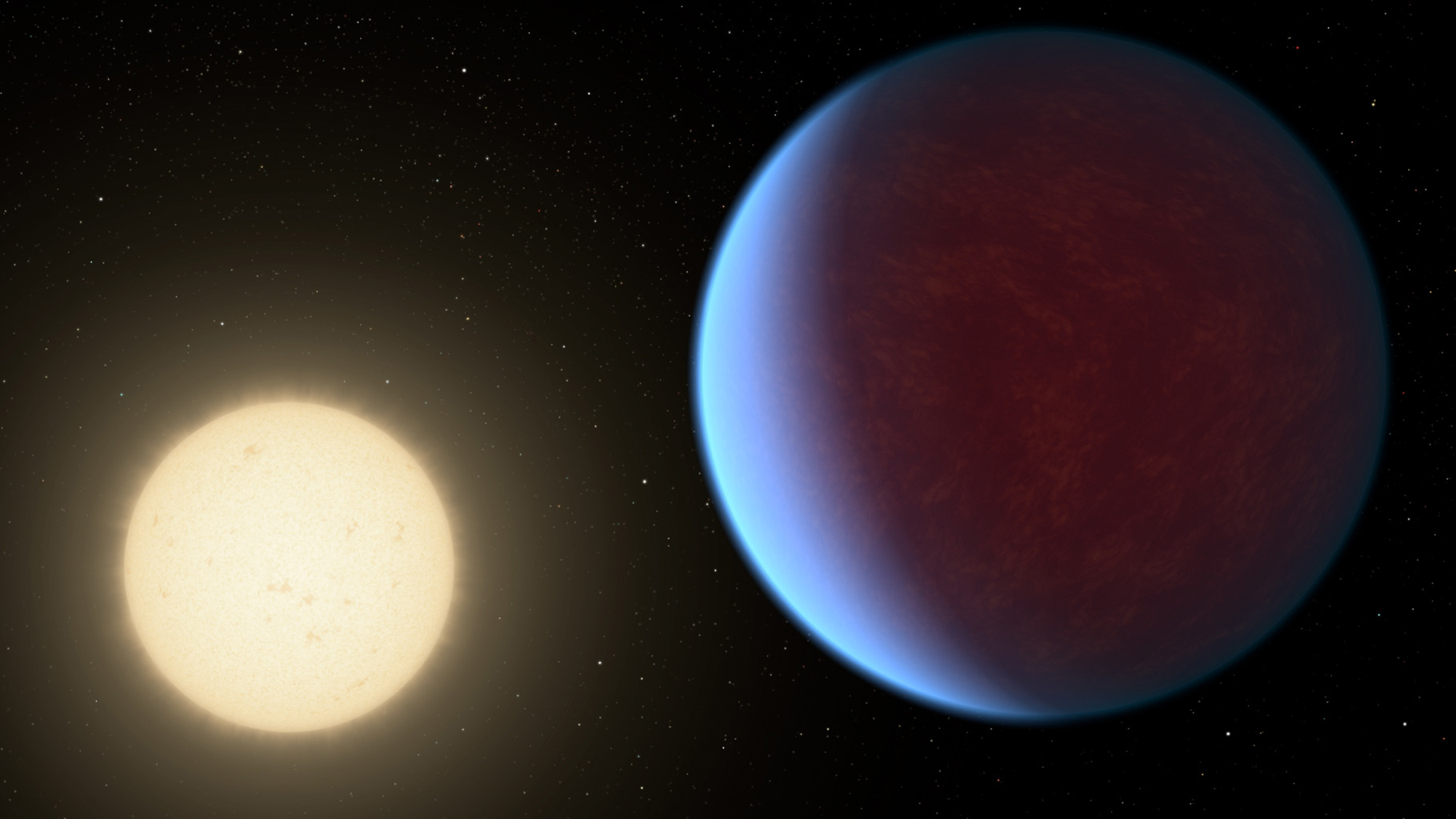Scorching-Hot Alien Planet May Have Earth-Like Atmosphere

A planet circling a star in the constellation Cancer might have an atmosphere similar to Earth's, but with dayside temperatures hot enough to melt titanium, a new study suggests.
The planet is called 55 Cancri e, and it lies about 41 light-years from the sun. The alien world has a diameter twice that of Earth and harbors about eight times more mass than our planet.
55 Cancri e was discovered in 2004, and it orbits just 1.4 million miles (2.3 million kilometers) from its host star — so close that a year on the alien planet lasts just 18 hours. In fact, 55 Cancri e is tidally locked, meaning it always shows the same face to its star. [Oozing Super-Earth: Images of Alien Planet 55 Cancri e]
Observations by NASA's Spitzer Space Telescope had previously suggested that lava may flow on 55 Cancri e's dayside but harden on the cooler nightside. In the new study, researchers took another look at the Spitzer data, and combined that information with a model of how energy likely flows around the exoplanet.
The results, which were published earlier this month in The Astronomical Journal, are interesting. If 55 Cancri e lacked an atmosphere, team members said, Spitzer's infrared sensors would see discrete hot spots from lava pools and little movement of heat from one side of the planet to the other. But the new analysis doesn't reflect that scenario; for example, Spitzer hasn't seen such hot spots, and 55 Cancri e's nightside is apparently warmer than previously thought.
"If there is lava on this planet, it would need to cover the entire surface," study co-author Renyu Hu, an astronomer at NASA's Jet Propulsion Laboratory in Pasadena, California, said in a statement. "But the lava would be hidden from our view by the thick atmosphere."
That atmosphere likely contains oxygen, nitrogen and water vapor — rather like the air of Earth, but a lot thicker and heavier, the researchers said.
Breaking space news, the latest updates on rocket launches, skywatching events and more!
"Scientists have been debating whether this planet has an atmosphere like Earth and Venus, or just a rocky core and no atmosphere, like Mercury. The case for an atmosphere is now stronger than ever," Hu said.
55 Cancri e is incredibly hot by Earthly standards — the dayside temperature averages 4,200 degrees Fahrenheit (2,300 degrees Celsius), study team members said, whereas the nightside is around 2,400 to 2,600 degrees Fahrenheit (1,300 to 1,400 degrees C).
Follow us @Spacedotcom, Facebook and Google+. Original article on Space.com.

Jesse Emspak is a freelance journalist who has contributed to several publications, including Space.com, Scientific American, New Scientist, Smithsonian.com and Undark. He focuses on physics and cool technologies but has been known to write about the odder stories of human health and science as it relates to culture. Jesse has a Master of Arts from the University of California, Berkeley School of Journalism, and a Bachelor of Arts from the University of Rochester. Jesse spent years covering finance and cut his teeth at local newspapers, working local politics and police beats. Jesse likes to stay active and holds a fourth degree black belt in Karate, which just means he now knows how much he has to learn and the importance of good teaching.

